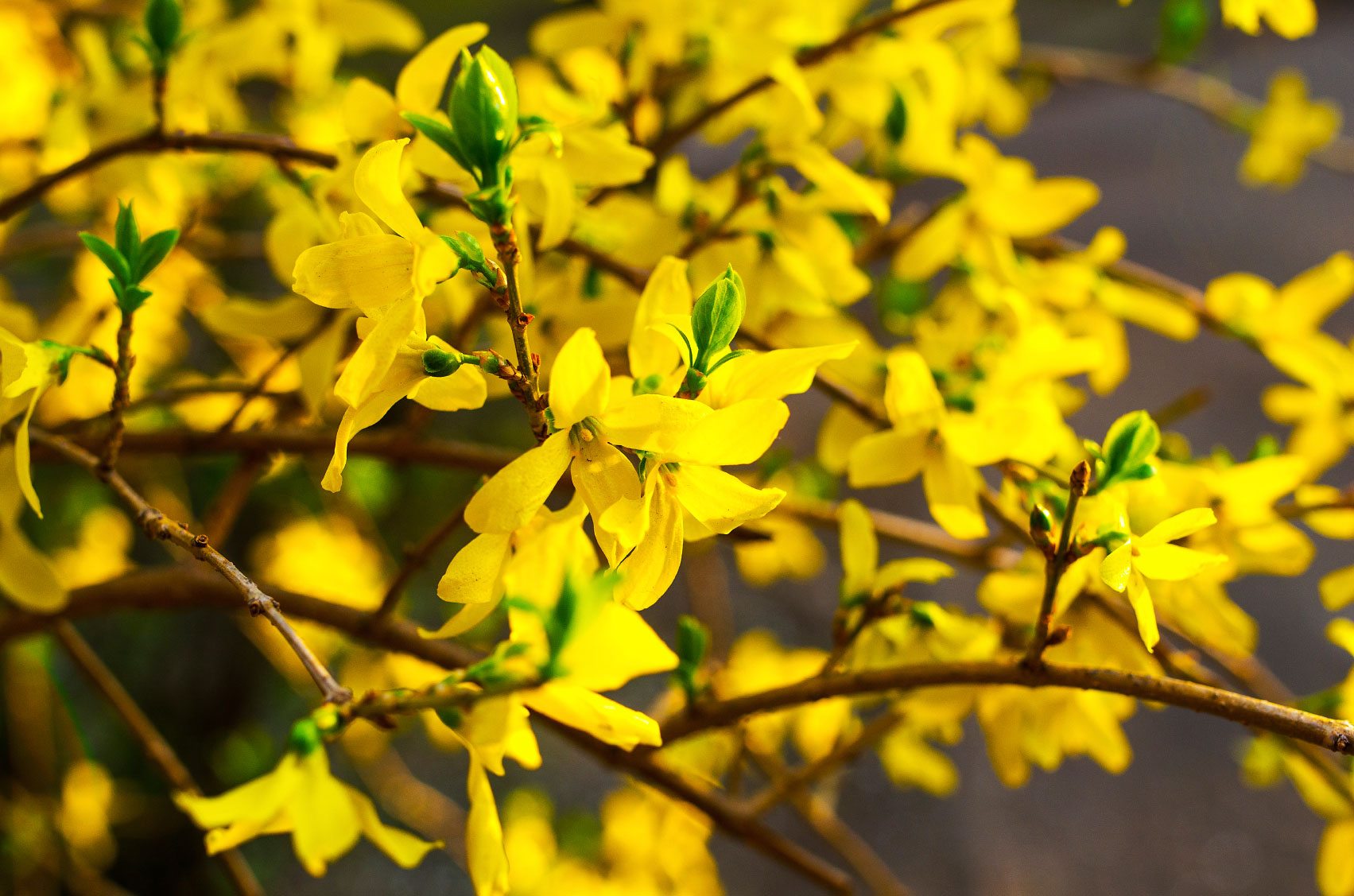Can You Propagate Forsythia: How To Propagate Forsythia Shrubs


Forsythia bursts into bloom in late winter, well ahead of most other early-season shrubs. They look fantastic in groupings and shrub borders, and they make an attractive informal hedge. If you can't get enough of them, this article will help you with propagating forsythia plants. Layering and cuttings are the two easiest and quickest ways of rooting a forsythia bush. Even beginners will have success with this easy-to-root plant.
Taking Forsythia Cuttings
Prepare a pot before you take your cuttings so they won't dry out while you work. Fill the pot to within one-half inch (1 cm.) of the top with perlite or sand. Moisten the perlite or sand and allow the pot to drain. In June or July, take 4 to 6 inch (10-15 cm.) cuttings from the tips of the current year's growth. Remove the leaves from the lower half of the cutting and dip 2 inches (5 cm.) of the cut end in rooting hormone. Use a pencil to make a hole in the center of the pot and insert the lower end of the cutting in the hole. Make sure no leaves are under or resting on the medium (sand or perlite). Firm up the medium around the base of the cutting. Place the potted cutting inside a plastic bag and seal it. The bag forms a little greenhouse around the cutting and keeps it from drying out. Place it in a warm location, out of direct sunlight. Keep the medium moist, and after a few days, open the top of the bag to let fresh air in. The cutting should have roots after about six to eight weeks and you can transplant it to a larger pot. Transplant the cutting outdoors in spring or fall after hardening it off. Hardening acclimates the plant to outdoor conditions and reduces transplant problems. Harden off forsythia cuttings by exposing them to increasingly longer periods of time outdoors over a period of two weeks.
Rooting a Forsythia Bush by Layering
Layering is perhaps the easiest way to propagate forsythia shrubs. In fact, if you aren't careful about keeping the stems off the ground, the plant may layer itself. Fill a large pot with potting soil and place it near the shrub. Select a stem that is long enough to reach the pot with about a foot (31 cm.) or more to spare. Wound the stem about 10 inches (25 cm.) from the tip by scraping it with a knife and bury the scraped part of the stem under 2 inches (5 cm.) of soil with the tip remaining above the soil. You may need a stone or bent nail to hold the stem in place. Keep the soil moist at all times to encourage roots. Once the plant roots, cut the stem that connects the new plant to the parent plant.
Can You Propagate Forsythia from Seeds?
Forsythia gets off to a slow start when you germinate from seeds, but starting from seeds is an inexpensive method of getting a lot of plants. Growing from seeds gives you a sense of accomplishment and adds a deeper dimension to your gardening hobby. You may not find forsythia seeds in your local garden center, but you can order them online or collect seeds from mature flowers. Start seeds indoors in containers any time of year. Moisten a container filled with potting soil or seed starting medium. You don't want it so wet that you can squeeze water from the soil because the seeds might rot. Place a few seeds on top of the soil in the container and cover them with one-quarter inch (2 cm.) of additional soil. Cover the pot with plastic wrap or place it inside a plastic bag, and place it in a warm location out of direct sunlight. Keep the soil moist and remove the plastic when the seeds germinate. Once you remove the plastic, place the plant in a sunny location. Transplant outdoors in spring or fall.
Sign up for the Gardening Know How newsletter today and receive a free copy of our e-book "How to Grow Delicious Tomatoes".

Jackie Carroll has written over 500 articles for Gardening Know How on a wide range of topics.